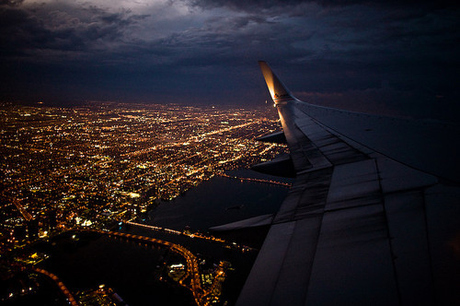 If you’ve ever flown and gotten the chance to look out the window as you ascend, the view often leaves us with a sense of awe—especially the first time. If you haven’t flown before, I can try to describe it to you. When you’re stuck on the ground, it’s easy to only see what’s in front of you. But from above, your viewpoint both literally and metaphorically will change. It’s kind of like zooming out. You see individual lights become less distinct; you see how all the roads connect and how exactly you get from point A to B. Your city becomes indistinguishable amongst the lights, you see the trees that separate towns; you see your individual home become something so much bigger than what it is. It becomes part of a system. It becomes part of a whole. As we bid farewell to Lima, Peru and the 20th Conference of Parties (COP 20) on Sunday, an annual United Nations climate change negotiation, it’s these thoughts that were running through my head. Did they run through the negotiators’? No matter if they flew in a helicopter, jet, or stuck on a plane like the rest of us—did they watch as their bubble melts away into the surface of the Earth? Did they think about what they discussed this past week? Did they fight hard enough to save the fate of this delicate system? The official outcomes of the countless hours of negotiations have been released in the Lima Call for Climate Action, as it’s being called. I think the name is extremely significant, no matter what the content is: no longer can we sit and talk about climate change. We need to mobilize and start fighting against it. It’s easy to get this feeling from the COP as an observer. As an observer, our days were often filled with interesting talks and side-events presented by the people who are doing something. These are people from all kinds of organizations, mostly different kinds of Non-Governmental Organizations (NGOs). Each side-event, usually an hour and a half to two hours long, is basically a panel of experts giving presentations or engaging in conversation about a specific topic (agriculture, technology, energy, water, et cetera). When we’re bouncing around to each different side-event, trying to decide which to spend our time at, furiously taking notes and trying to soak up all the knowledge we can, it’s easy to feel empowered about climate change. With or without governmental help, these are people who are making massive changes in their communities and beyond. It makes me wish more people in America, especially students my age, were like them. In addition to the official side-events, there’s also the opportunity to meet countless individuals, who are wonderful sources of information as well. Sure, some of the more higher level stuff might be exciting to talk about (getting to hear Al Gore, or sneak into John Kerry’s press conference, or getting to go to the Presidential Plenary), but it is these individuals who really matter in the battle against climate change. However, there is always a slight lull in the air that fills the non-existent silence; the slight itch that everyone has in the back of their mind. So of course, it all boils down to that one, single question: What will come out of COP 20’s negotiations? For all of the work that the NGOs are doing, will their governments hear their cry? Will they follow in their people’s example and do what’s right? So we hang onto every word of the negotiations that we can: what country is saying what, who is being difficult and refusing to be flexible and is in the way of progress? A good recap that happened at 6 pm every day was an event called the Fossil of the Day, which highlighted a country (or a couple of more) that was “the best at being the worst – doing the most to do the least – who is trying to their hardest to keep us from a fair, just, and binding climate agreement.” It has been outlined that at COP 20 in Lima, the idea was to establish a signed, legally-binding draft of a document akin to a treaty that would bind all of the world’s nations together against climate change. This draft would be finalized in Paris, France at COP 21. On Friday, the last day at the COP, the energy was thick in the air. Everyone buzzed around the two Plenary sessions, listening to countries talk about what they needed changed in the document, trying to bide their time until an agreement could be reached. As the hours ticked by, our group decided that there was no way anything was getting done tonight – and so, we took the shuttle bus home, our hearts and minds still back at the COP, wondering when we’d get news. However, despite having an original deadline of Friday, we did not receive news until Sunday morning. Some of the last meetings were held early into Sunday morning; an emergency press conference had been called at 1 am. And so, the outcome of the Lima Call for Climate Action has been released. At to the dismay of many, many people, nothing has been signed. Sure, officials like COP 20’s president have released statements that they are optimistic about the outcome of Lima – that we’ve made forward on a lot of ground and they are left with high hopes for COP 21 – but other people are not as excited. NGO’s are quick to take a more critical eye to the Lima Call for Climate Action. In all reality, the negotiators have done nothing but kick the can to Paris in 2015, despite the name of the Lima Call for Climate Action. Many people from the NGO’s are frustrated and upset that such a thing has happened. It’s obvious that because the fossil fuel industry still has such a hold on our economy and society that our governments will not willingly make moves in the right direction. Which means that this call for climate action was a call to the people. It was a call to you, me, and every other individual in the world. We need to show our governments that change is not just what we want – it’s what we need. If we want to curb the effects of climate change, we need to act, and act now. Because right now, it just seems like we’re rejecting the call for climate action.
0 Comments
“We know there will be costs in taking action, but if we were to compare that with the costs of inaction, there is absolutely no comparison, because the impacts of climate change will become progressively more difficult and beyond the scope of our being able to adapt to them. Action has to be taken now.” – IPCC Chair, Rajendra Pachauri Big emitters like China, the United States, the European Union, India, Russia, Japan, and Canada all need to Play Their Part. Smaller and less developed nations, some of whom face an existentialistic threat posed by climate change, can only do so much. For me, hearing firsthand the pleas for action by delegates from many of the small island nations in the Pacific really puts in perspective how serious climate change is. But, more importantly, it conveys a real sense of urgency for us to act together accordingly. “We have to act quickly and decisively if we want to avoid increasingly destructive outcomes. But, we do have means to limit climate change and build a better future.” – IPCC Video My biggest takeaway from Lima is that, while we are dealing with a very serious situation, there is reason for hope. Those that stand to be impacted the most by the adverse effects of climate change are the younger generations of today. At COP20, the youth of the world could definitely be seen and heard, even though we were vastly outnumbered! There were numerous actions and demonstrations by young people throughout the conference. This needs to continue throughout the world, outside of the framework of the United Nations, from discussions with friends at your local coffee shop to small talk around the dinner table, and all the way to COP21 in Paris next year.
So I am back tracking here, however I fell in love with the U.S. Center here at COP 20 and tried to attend as many talks as I could that involved the hyper wall. A specific talk I attended on Tuesday involved building a Low Carbon Technology Pathway by using the Clean Energy Ministerial ideas.
The Clean Energy Ministerial (CEM) is a global forum; it helps to encourage the transition to a clean energy economy. There are three goals that are imperative to this transition: 1. Improve energy efficiency. The CEM wants to promote rapid deployment of renewable energy, smart grids, and electric vehicles. 2. Enhance the clean energy supply. 3. Expand clean energy access. This includes energy efficiency, clean energy, integration, and to improve the amount of people converting to clean energy. Women also need to be supported in pursuing careers in clean energy for this transition to be successful. Some major talks throughout the week included women empowerment and development, and the role women play in climate change. There are several opportunities that we can commit to and make our planet better by using clean energy. If we change the way energy is being managed we can help facilities achieve more energy efficiency. Specifically 10% to 40% of energy can be conserved. We have the potential to increase hydro power for electricity production. This technology is imperative for the transition toward a low-carbon economy. So what else could we do to maintain energy efficiency? What about Solar and Wind technologies? You guessed it, another way to transition toward a low-carbon economy. If we provide wind and solar energy to regions across the world it can help to provide working jobs, it can reduce emissions, and it can promote energy security around the globe. WHAT ARE WE WAITING FOR?! The CEM wants a low-carbon economy and they are working very hard to promote their ideas around the world. There are SO many options for a sustainable future and we must act now to save future generations. I cannot stress enough how concerned I am for the wellbeing of my generation as well as I am concerned for what may happen tomorrow. The truth is with climate change some things are still unknown. That is part of the struggle we are facing every day. Let me say again that WE HAVE OPTIONS. Two of the main clean energy technologies include smart grids and clean vehicles. If the world potentially switches over to electric vehicles we can increase energy security, reduce carbon emissions, and improve local air quality around the world. Let me tell you about the air quality in Peru really quickly, Lima especially. It is not very clean. Being squished in the back of a cab several times with four people it’s bound for one of us to become car sick and need “fresh air”. Well, as you can imagine opening the window and breathing in the air here will only make you sicker. To wrap this up one last thing the CEM is working toward. They want to develop a Global Atlas that will cover additional renewable energy resources including bioenergy, geothermal, hydropower, and marine energy that the whole world can be exposed to. Not knowing a lot of information on clean energy before coming to the COP I really enjoyed learning about the Clean Energy Ministerial and would like everyone reading to take a look at their amazing website to learn more. Cleanenergyministerial.org John Kerry’s overall message? The science of climate change is undeniable.
The “science of climate change is screaming at us and telling us to act.” You would think it would be harder to sneak into a meeting with the current United States Secretary of State. Yesterday at the United Nations International Conference on Climate Change Secretary of State, John Kerry, gave an exclusive press briefing concerning the official stance and goals of the USA. The only problem was this event was only open to those with press credentials. However, we knew that this would be a once in a lifetime opportunity, and immediately started scheming on how we could get into one of the most important events at COP20. We considered just confidently walking straight in and not acknowledge the security guards. We thought we could possibly track down a media friend and ask to use their badge to get in. We contemplated pleading with the security guards, trying to convince them the importance of students attending such a high-level event. We even thought about claiming we didn’t speak English and therefore didn't understand no. At the end of the day, did any of these methods work? No. We quickly walked up the stairs of the press building and directly into the conference room. The security guard gave us a quick nod, and that was it! We were in. John Kerry flew in yesterday morning and went straight to the military compound where the UN Conference is being held. The anticipation in the room was palpable as his appearance at the Conference is a direct reflection on the United States’ commitment to creating a draft treaty in Lima for the Paris negotiations next year. If the countries of the world do not create AND sign a draft treaty TONIGHT here in Lima, then it is likely that there WILL NOT BE a universal climate change agreement in Paris next year. When we saw John Kerry enter the room, we may have squealed with enthusiasm. Nina-> “HE’S HERE. HE IS ACTUALLY HERE” Standing tall and wearing a green tie (coincidental? I think not) he began to speak about the United State’s position on climate change. First, he referenced the Green Fund, which is supposed to hold 100 billion dollars, donated by all nations throughout the world, by 2020 in order to help developing countries adapt to climate change. He praised Peru, Australia, and Belgium for contributing to the fund this week. The target for this week was to gather 10 billion dollars and this goal has been exceeded. “All of this will help to ensure that this fund can succeed in helping the most overburdened nations of the world to do more to be able to respond to climate change.” Then, John Kerry spoke about how climate change should be considered equal with other national security threats. “Measured against the array of global threats that we face today—and there are many—terrorism, extremism, poverty, nuclear proliferation—all challenges that know no borders—climate change absolutely ranks up there equal with all of them.” Now to give the urgency of this issues some perspective. John Kerry has attended every one of these climate negotiations since the Earth Summit in Rio in 1992. That was the year that I was born. He has been attending these conferences to take action on climate change for 22 years. In 22 years there has yet to be a global agreement on how to reduce our global carbon emissions and prevent global temperatures from rising above the 3.6 degree Fahrenheit increase. Kerry pointed out that all of us here are committed, but we have to start being candid. “This is personal for me, as it is personal for you.” He continued on by mentioning how it is important for every nation to take responsibility. We can only “pass this climate test” if every nation does their part. He shared the U.S.’s opinion about the responsibility of developing nations. These nations, such as China and India, emit half of the world’s carbon emissions and thus do not get a free pass. They also have to step up to the plate. An important message that he shared is that it is NOT TOO LATE to act. “Mankind is causing it, and mankind can solve it.” The answer, according to Kerry, lies within transforming the energy sector. Cutting emissions in the energy sector through effective energy policy is the solution. We cannot understate the urgency in his speech to act. The thing is, we THINK we have time. But the FACT is that we just simply don’t have the time to argue back and forth about who is responsible to act. What can we do? “Speak out and call upon your leaders with the issues that concern you, such as climate change, so much that no public figure can ignore it any longer.” Our country has to look further down the road. The costs of climate change in the long run severely outweigh the short-term costs to mitigate climate change today. Acting now is the cheaper alternative. John Kerry's speech was well received by everyone in the room. For the first time, the United States is somewhat stepping up to the plate and accepting responsibility. This can be seen in the China and U.S. deal as well as with the EPA's amendment to the Clean Air Act attempting to regulate emissions from coal-fired power plants. I'll end with a last quote from John Kerry. “If you are a big developed nation and you do not lead, you are part of the problem." There’s a lot of potential on a bus. Choosing to sit alone when you first board the shuttle bus that takes those accredited can be a little scary. At first, you’re sitting, still kind of asleep, half-hoping that no one will sit next to you because really, the best thing would be to get to shut your eyes and ride out the bumper-to-bumper traffic in a dreamy haze. But then, opportunities would fall to the wayside. On the morning of December 10th, a lovely woman named Verona sat next to me. She works with UN Women, located in New York. The 10th was the day after Gender Day at the COP, so sitting next to her and getting to talk to her was a wonderful opportunity in and of itself. However, as we inched closer and closer to the bus during our stop-and-sometimes-go bus ride, she turned to me and asked, “what will you do when you get there this morning?” Thinking about it for a moment, I said, “probably try to get into the overflow room so we can watch the Presidential Plenary.” The Plenary, for those that don’t know, is a general “opening ceremonies” that is held at the COP every morning. The President of the COP always hosts it, and different guests and officials speak every day. At the Presidential Plenary, the president of Peru, Chile, and Columbia would be speaking. Because of this, it was considered a high-level event, and the only way to get in to the actual room would be with a ticket. However, with our ‘observer pass’ status, none of us could get tickets the day we had tried. But Verona smiled at me. “I’ve got an extra ticket, if you’d like to go.” She paused, considering the time. “We’ll probably arrive just in time.” Sure enough, with a bit of hurrying through security, we were just in time for the Plenary to begin. 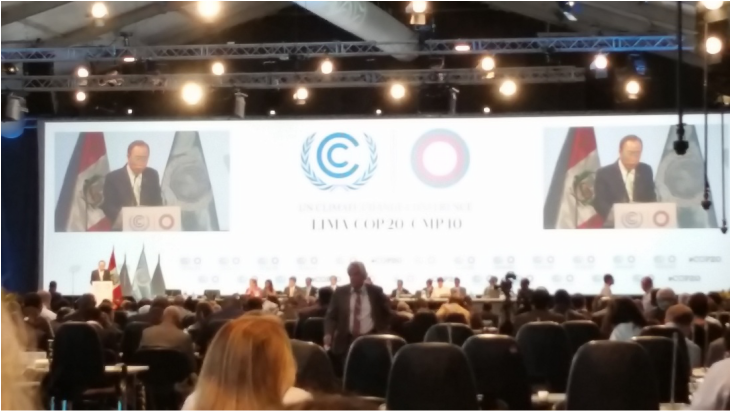 Mr. Ban Ki-Moon addressing the Plenary session on December 10th, 2014. Mr. Ban Ki-Moon addressing the Plenary session on December 10th, 2014. The first to speak, after being properly introduced by the COP 20 President, was Ollanta Humala, the president of Peru. He touched on some of the many actions being taken here in Peru to fight climate change now. For example, he announced proudly that Peru would be donating $6 million dollars to the Green Climate Fund this was an announcement that was met with an uproarious applause from the audience. After passing the $10 billion mark already in the Green Climate Fund, the fact that we are surpassing that check point is beyond inspirational. After him, president of Chile, Michelle Bachelet, spoke. Chile has commited to reducing their emissions by 20% by 2020 (based off of 2007 emissions). They have also enacted a National Adaptation Plan, which not only includes 100+ actions to improve sustainability in their country, but also builds new avenues for generating information about environmental studies. The third president to speak was the president of Columbia, Juan Manuel Santos. One of the biggest actions currently happening in Columbia is that they have committed to a zero net deforestation rate by 2020. Considering that most of the deforestation that currently happens in Columbia is illegal, this is an extremely complex issue beyond simply stopping deforestation. He also made a remark about how he was going to announce Columbia’s commitment of $4 million to the Green Climate Fund… but since Peru had already set the bar, he decided right then to up the ante to match the $6 million that Peru would be donating. Once again, the crowd went wild. Following the presidents, the ever-inspirational Secretary-General of the United Nations Ban Ki-Moon took the floor. If you ever have the chance to hear this man speak, you must. He, and the three presidents, all had very inspirational and moving speeches – all four of these high-level officials saying many of the same thing about COP 20 and about where we must go if we hope to save our planet; if we hope to save lives. All of these officials proclaimed that the negotiations (ending today) must have strong, decisive language that outlines clear goals. These goals must be legally-binding, and must align not just every nation, but everyone. It must align academia, the private sector, governments, working class and the rural poor; it must work towards every single person’s best interest, and it must work to save lives. It must set a solid foundation of a signed draft, so when COP 21 in Paris, France comes along, we will have something that is legally-binding, something that will make countries lower their greenhouse gas emissions, invest in the low-carbon economy, promote green innovation, and improve public health. This legally-binding negotiation must create a world-wide alliance, the biggest in all of human history. Every single person can be brought together in our fight against the common enemy: climate change. This is imperative. These three presidents and Mr. Secretary-General made it very clear. We must commit to action. We know one thing; time is not on our side. We cannot afford to put off a decision like this farther than Paris; in fact, all of them made it very clear that it is up to us—the people—to take action now. To urge our countries to act globally, to change the way we live in order to do what we can. We can only hope that their actions match their big words. Think about it. It may seem like as individuals, we are powerless – but climate change is directly affecting individuals. Which is why every single individual action against climate change, from now to 2015 and beyond, is important. Half way through Al Gore’s lecture, we thought that he had lied to us. You see, when he began his presentation at the United Nations Conference yesterday, he promised that his presentation was going to be optimistic. After approximately an hour we were overwhelmed with empathy and exacerbation for the devastating realities that the world is facing because of climate change TODAY. Live footage from extreme weather events in the Philippines, Brazil, Nepal, China, Afghanistan, United States (YES US TOO), and many more shed light on how these extreme weather events such as floods, hurricanes, forest fires, and mudslides are not isolated incidents. These events are happening across the globe, affecting people in developing and developed countries alike. People are losing their livelihoods, their homes, and their lives because of these super storm weather events linked inextricably to human induced climate change. During his presentation, we witnessed video after video of people struggling to survive these severe weather events from across the globe. Below is one impactful short video of a flooding victim rescue. Below is another. 2014 is on track to be the hottest year on record. Al Gore poignantly stated that we are caught between danger and opportunity in this crisis. Countries around the globe that are witnessing and recognizing the impacts of climate change, for example the melting of the ice caps, are taking desperate action. The Peruvian government is painting their mountains white to try to save the melting glaciers. Their desperate hope is that the white paint will reflect the sun’s rays in order to decrease the acceleration of their main source of drinking water. The government of the island nation of Kiribati in the Pacific Ocean has BOUGHT LAND on Fiji as an insurance plan to house climate refugees once sea level begins to rise.
On this emotional rollercoaster ride, we did not know how Al Gore was going to end his lecture. How can we enact change? Where is the hope? Why is it so hard for us to change the path we are on? His response? Legacy industries that build up great wealth as well as political power and networks of connection, exercise more control over political decision making than is beneficial for the public interest at large. Aka he is talking about the fossil fuel industry. His hope lies in his belief that climate change is not a burden, but an opportunity for sustainable economic growth. He believes we must put a price on carbon because then the market will then become our ally. The importance of activism was specifically highlighted, as Al Gore personally invited the audience to join in the fight against climate change. We have a great choice at this point; we can either continue on the destructive path toward irreversible climate change, or we can join hands across the world and form the greatest alliance in history. In order to achieve this goal, we need to create a social movement to instigate political change. All the world leaders are doing a lot of talking, but there has been little action. If you are from the United States, make sure you raise your voice. These international talks are nothing without your support. Stay tuned for our next blog focusing on John Kerry’s press briefing, which declared the United States’ official stance on climate action. This picture below was taken by a satellite and that pale blue dot is our Earth in space. We must remember that it can not be replaced. Below is a picture of Madagascar. Yes. I know what you were thinking. It IS one of the most beautiful places on Earth. The Madagascar Delegation (shown above on the top of the page) is fighting to save their home. For those of you like me, who struggle sometimes with geography, Madagascar is an island located off of the coast of Eastern Africa. It is the fourth largest island in the world with a population close to 15.9 million. It is also a hotspot for unique animals and wildlife! Over 80% of the fauna and flora found on this island are found NO WHERE ELSE on Earth. Here is a picture of the Indri Lemur, native to Madagascar! This extensive amount of biodiversity has to be protected. As many of you may know, we are currently destroying the habitats and lives of so many plants and animals per month that we are technically living through the 6th mass extinction in the history of our planet. To read more about that check out this website
Now let me get back on track and tell you about our meeting with the Madagascar delegation yesterday. It all started on the bus on our way to the conference. Now, I think I have to quickly note here, how Nina is the luckiest out of all of us! She sat next the lead negotiator for Madagascar Marcellin Rabeantoandro who then offered to meet with us later in the afternoon. He also happens to be the deputy Minister for the Environment, Ecology and Forestry Services. At 6pm we wandered over the plenary to meet with Minister Rabeantoandro. Now the plenary is a session of the conference where EVERY nation-state has the opportunity to speak and share their opinions about the negotiations and climate change. Rabeantoandro met us outside and politely asked if we would wait a few more minutes for the plenary to wrap up. We went inside the vast meeting hall and listened to representatives from Paraguay, Ecuador, and Belgium share their opening regards. Then, our new acquaintance began his speech! Talking in his native language, French, he spoke passionately about the need for developed countries’ to help finance Madagascar’s adaptation to climate change. Our discussion afterward was insightful and inspiring. We spoke with the entire delegation and here is a brief summary of our conversation. Countries such as Madagascar are feeling the negative repercussions of climate change right now, specifically on their agricultural production. There have been dramatic weather changes, which is negatively impacting their crops and leading to less diverse crop production. With less agricultural yields; food security is a critical concern. Minister Rabeantoandro is a huge supporter of the Green Climate Fund. He believes that the Green Climate Fund can provide Madagascar with the monetary means to adapt to a changing climate. They need assistance in “building up capacity” through financing. Some recent good news is that donations from countries to the Green Climate Fund have exceeded the goal of 10 billion for this Conference. Then the Madagascar delegation also stressed the importance of education. “One person, One Tree” They believe that if the youth can be taught to value the Earth then Madagascar will have a sustainable future. I think this is applicable for all children and the youth throughout the globe. In addition, the delegation believes that the United Nations REDD+ program, to reduce emissions from deforestation and degradation, will have a strong positive impact on Madagascar’s forests. To read more about this new and vital land management initiative check out this website . The most important aspect of our discussion revolved around the concept of responsibility. Those people living in Madagascar are not responsible for climate change, but they are feeling the repercussions of our actions. It begs us to ask the question, “Where is the justice in that?” and I automatically think, “What can WE do to help these countries?” Representatives from the delegation said very specifically - Big emitters, such as the United States, have to help us because we did not do this to ourselves. Developed countries need to take responsibility for their actions. In addition, they believe that a carbon tax is essential in mitigation. Mitigating climate change will allow the people of Madagascar to fight against poverty and create a green and sustainable economy. Personally, I agree that the United States, as well as other developed countries, need to take some responsibility for the green house gases they have emitted consistently over decades. I also believe that a carbon tax is essential in order to significantly curb emissions and incentivize innovations in green technology. Want to find out what the United States thinks about taking responsibility, carbon taxes, and taking action? Stay tuned for our next blog about hearing both Al Gore and John Kerry speak! Here's a candid of us with the delegates! Shelby Bariana: Why I won’t be eating meat again…for a LONG time. (Today’s topic is pretty meaty)11/12/2014  Being here for 12 hours a day and listening to such a wide variety of speakers is a lot of information to handle. However, yesterday I took away a powerful, clear message that will stick with me for a long time: We must learn the difference between NEED and WANT. We must also learn the difference between GREED and ABUNDANCE. We need to do more than be advocates for climate change; we need to change the way we live. After listening to a talk by (THE) Al Gore yesterday, I had the opportunity to sit in on a very small discussion with presentations from Christiana Wyly from the Avatar Alliance Foundation, the Senior Research Fellow Antony Froggatt from the Chatham House, a woman from the Humane Society International and Mary Louise Malig from the Global Forest Coalition. Here are a few highlights from the talk: Animal agriculture is responsible for 14.5% of manmade greenhouse gas emissions. This includes all production of land based animals. The cycle known as the Forest to Fork cycle is broken up like this: 9% Deforestation 40% Cow and Sheep Farts and Burps 2% Energy Use 36% Animal Feed Production 10% Manure (Methane and Nitrous Oxide) 3% Transport and Processing If this cycle continues at these high percentages and a change is not made there is no possible way we can stay under the projected 2 degrees C temperature increase. Livestock uses 75% of global agricultural land and 23% croplands in the world. Reducing the consumption of animal foods is absolutely critical to help mitigate climate change. HUMANE SOCIETY INTERNATIONAL (HIS) is one of the largest animal protection agencies around the world. This society works within all levels of government to work toward a policy that will INCREASE protection of animals from all the harmful impacts of climate change. The cruelty and reality of how animals are treated for human consumption is absolutely mind blowing and I was sincerely disgusted by these harsh realities at the end of this talk. 75 BILLION Animals are raised globally for human consumption. For their entire life the animals are restricted in crates and are virtually immobilized because they cannot move. Imagine yourself getting off into an airport that is severely crowded and trying to make your way through, that is how these animals are confined their entire lives with no escape at all. This is both harmful and cruel. Having knowledge of what goes on behind the scenes of food consumption and production is taking into consideration an entire chain of events and not just the final product we see on our plates every day. WE CAN HELP. No matter how small the action is we all need to work together to solve this animal agricultural problem so we can sustain food security for future generations. The Meatless Monday campaign consists of leaving meat off your plates once a week on Mondays. This is being practiced throughout the US and in schools around Los Angeles specifically. I personally plan to encourage fellow friends and classmates on campus to participate in Meatless Mondays as well. http://reviewonline.co.za/48088/meatless-monday-mediterranean-vegetable-noodle-soup/ There are several solutions to this type of animal cruelty, we need to create innovative ways to address unsustainable demand and we must evaluate, enhance, and safeguard animal welfare. Not only are the animals being treated poorly, humans are also exposed to this type of agriculture. The intensive livestock of chickens and eggs threatens the safety conditions of the people and the animals. This situation revolves around 4 things: 1. Food Security and Hunger 2. Animal Welfare and Rights 3. Equity and Power 4. Human and Environmental Rights This part really got to me emotionally, the slaughter houses of chickens and the communities and villages surrounding them are living in such poor conditions. The flies are all over their living areas and the air quality is not at a safe level. Broken down the explanation is simple, money. The markets make money off of animal agriculture and broken down this past year as follows: 1.5 billion dollars in eggs 7.3 billion dollars in pig meat 15.3 billion dollars in milk 6.5 billion dollars in poultry 18.0 billion dollars in beef and veal 1.1 billion dollars in sheep The new “climate-smart agriculture” is supposed to reduce emissions and address the hunger issues. We are acknowledging that climate change and the extreme weather is destroying crops and livelihood. We need to grow more food on LESS land, and use crops and techniques that are resilient to the flash floods and droughts throughout the world. Policy needs to realize that the peasants and indigenous people in the communities are not slave workers who just feed the market — they are people; it is essential we begin to feed the world in a healthy and organic way! 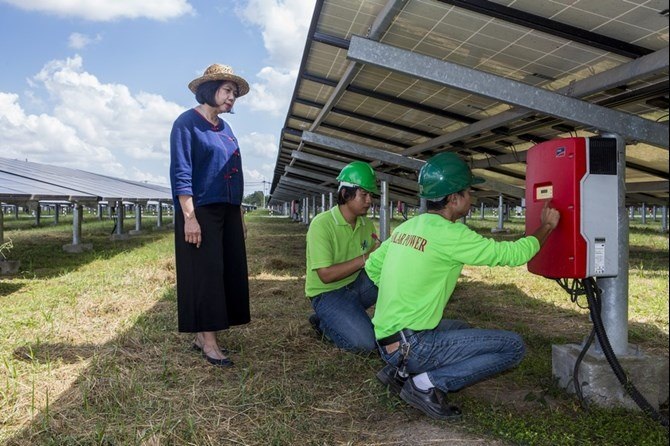 Ms. Khunchornyakong monitoring some meters in one of her 36 solar fields in Thailand. Ms. Khunchornyakong monitoring some meters in one of her 36 solar fields in Thailand. As many people know, gender balance in the science and political world is nonexistent. Women have absolutely become more represented in these fields, but the disparity and difference between the genders is still there, and still strong. Along with science and politics, the COP becomes a melting pot for both of those worlds to come together as the climate science is applied and considered in policy making. Along with more distinct and definitive wording needing to be utilized in the official policies, we also need to reconsider our entire approach to climate change. Think about it – when we hear about things like renewable energy, or new infrastructure, or more efficient appliances, or electric cars, what pops into everyone’s mind? Money. And why? Because politicians have made it that way. They’ve presented climate change not as the disaster it is, but as a component of the economy; of course, it influences and is influenced by the economy, but by no means does that mean can we put a price on human lives. So where does this tie into gender? Yesterday at the COP’s gender day, I had the wonderful experience of getting to listen to, amongst others, Wandee Khunchornyakong speak about how her company began. When she got permission from the government that she could create her solar farms, she went to the banks in her city, making the case in asking for loans. After almost every bank turned her down, Ms. Khunchornyakong was able to find a bank to cover 60% of the costs. Which meant she’d have to find 40%. At the talk, Ms. Khunchornyakong smiled out into the audience, reminiscing about these days, with her husband in the row directly behind mine. She looked out at us and said, “I told him, ‘if we lose, we only lose money. But if we win…’” The implications are there. If their solar farms were successful (which they are), they wouldn’t just earn money; but lower carbon dioxide emissions, and end up offering thousands of local jobs and opportunities for people. Ms. Khunchornyakong’s words, I think, embodied the difference between how women lead and how men lead. So far, the discussion has revolved around money, because as the saying goes, “money talks.” Well, I think money might talk too much. When we consider climate change, we always ask ourselves what we can do to change. What can we make more efficient? What habits are bad and make large, negative impacts? What alternatives do we have? Maybe we should begin to consider to change the leadership. Allowing women to rise up to higher positions, allowing them into the discussion for policy making and help design the roadmaps to a livable, sustainable future could completely change the discussion. In the Doha Climate Change Conference in 2012, they had written into the text of a policy that women needed to attain more leadership roles. If it was recognized then, why is it not clear now? This is one of the many reasons why climate change is not just an environmental issue; it is an issue that touches all aspects of life, including social issues, such as gender equality. There are some strong women here at the United Nations Conference!
“If you undermine poverty, who picks up the pieces? The women, they pick up the pieces.” - Mary Robinson, CEO of Climate Justice and the First Woman President of Ireland We have to recognize that climate change is about people and development. At its center, climate change is inherently a peoples issue, specifically a problem that brings to light human rights and gender equality problems. At the Doha United Nations Climate Change Conference held in 2012 the COP adopted legislation promoting gender balance and improving the participation of women in the UNFCC negotiations. Since these discussions two years ago, there has been little action. Now at Lima, it is essential that gender equality be specifically written into the text. The negotiators have to agree to protect, respect, and fulfill human rights. This is what I learned when I attended a talk yesterday during the 3rd annual “Gender Day” hosted by the United Nations Framework Convention on Climate Change. During the course of the day there were multiple high-level side events focused on gender equality and the significant role that climate change will play in the lives of millions of women across the globe. As a woman, I related. As a person, I understood. Ethically, we must all start to align climate change with climate justice. Women are going to be more heavily impacted by the negative effects of climate change because 70% of the worlds poor are women. This is why women are going to be disproportionally impacted by the droughts, floods, extreme weather events, and food and water security consequences of climate change. The United Nations Momentum for Change campaign is a lighthouse campaign, shedding light on practical projects occurring across the world that are empowering people, raising standards of living, and providing better livelihoods for thousands of communities. WOMEN SPUR THE MOMENTUM FOR CHANGE. Here is an incredible example that connects water and climate change. Farmers in India are currently experiencing the effects of extreme weather caused by climate change. Most farmers in India are women. The flooding from the Monsoon season and flash floods have been water clogging the soil, while the drought season has been turning the soil into a desert. Agricultural productivity has significantly dropped which as been increasing starvation and poverty among already poor communities. Bhungaoo is a water management system that provides a technical solution. The excess water that would normally waterlog the crops is collected in an underground reservoir. This water can then be lifted out during the rest of the year to use during the drought season. This simple yet progressive agricultural practice is changing the lives of these women farmers. The massive underground reservoir can hold as much as 40 million liters of water and can supply water for as long as 7 months. A social enterprise, Naireeta Services, trains women to run and monitor the Bhungroo’s in their communities. Now, over 18,000 farmers (with over 96,000 dependent family members) have achieved better food security while improving their standards of living. The average annual income has increased from 200 to 700 USD. This program has helped free women from debt, attain land ownership and participate in local governance as a result of their expertise and influence in agriculture and water. Participation is a form of empowerment. At the end of the talk, a woman from Uganda stood up and asked if Bhungoo systems could be installed in her community, which is facing similar impacts from climate change. She mentioned the positive impact this technology can have for women in her community. We need to shed light on these issues because we need to begin sharing solutions. We can improve the livelihoods of poor people across the globe through these innovative projects that IMPROVE communities, SAVE the environment and EMPOWER women. We can help these women mitigate and adapt to climate change! Climate change does not impact us equally. This needs to be a part of the discussion. |
Categories
All
Archives
March 2024
|
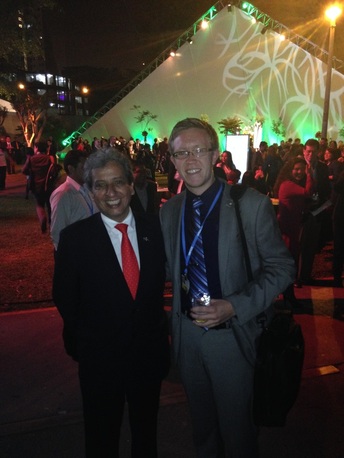
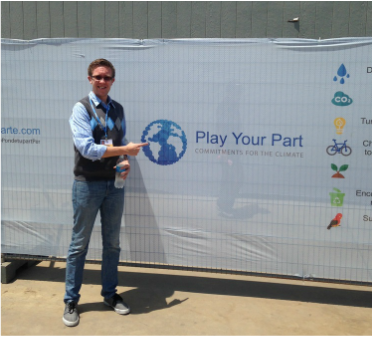
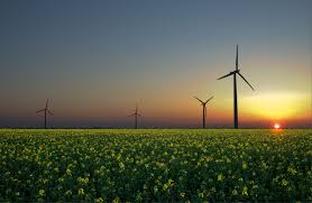
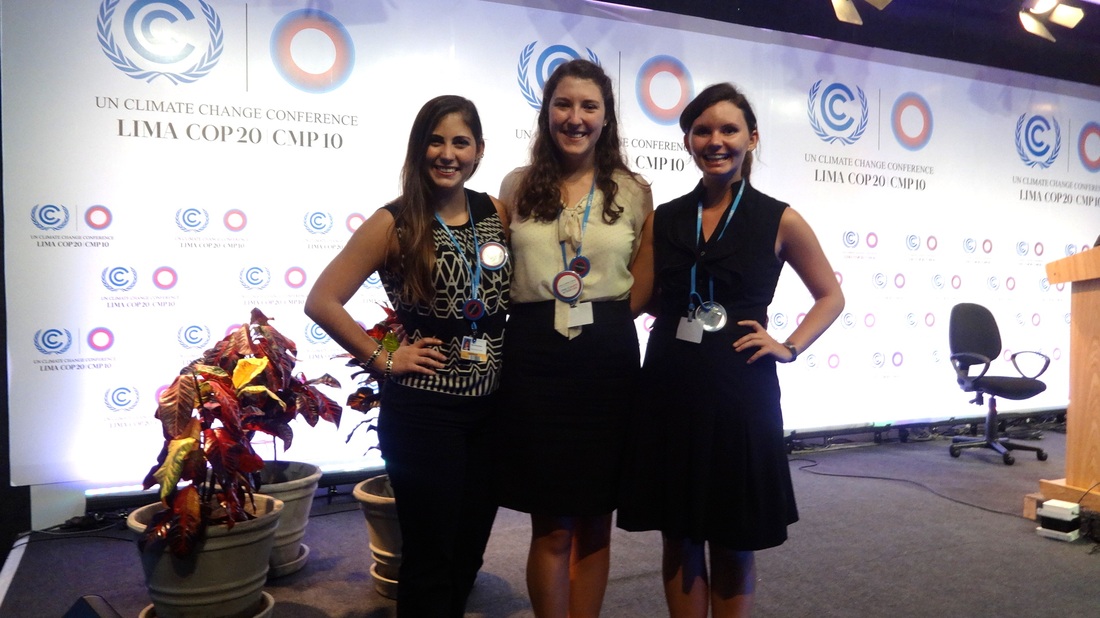
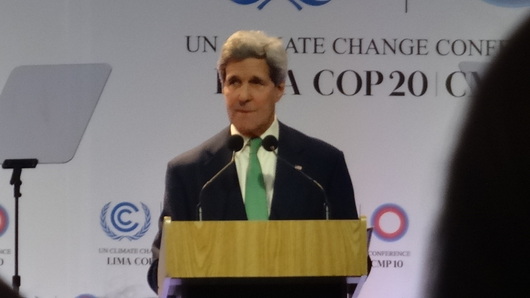
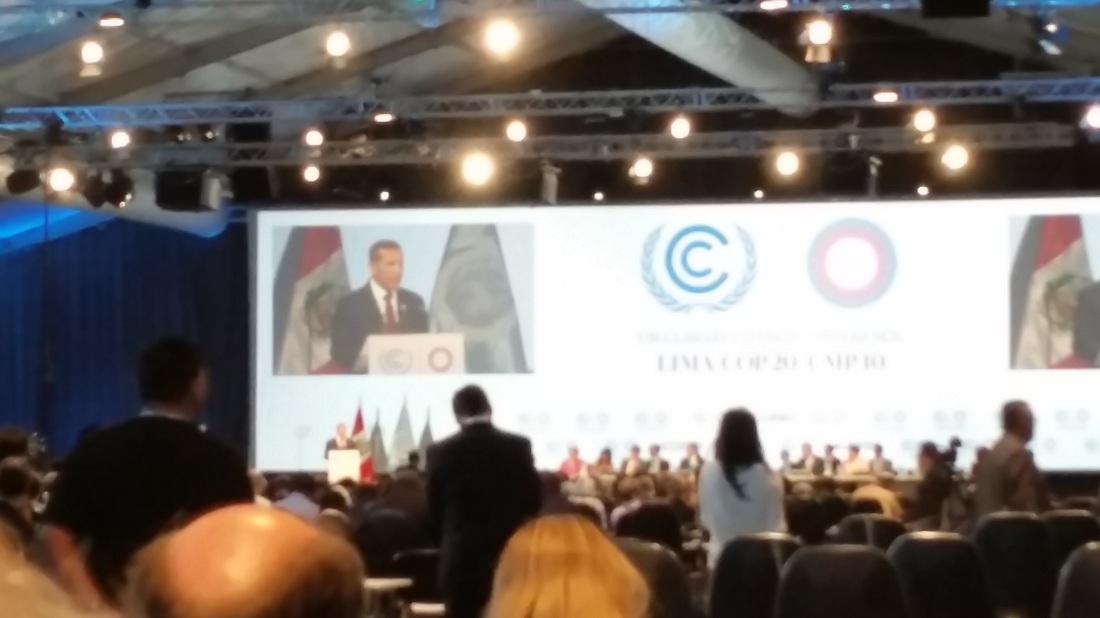
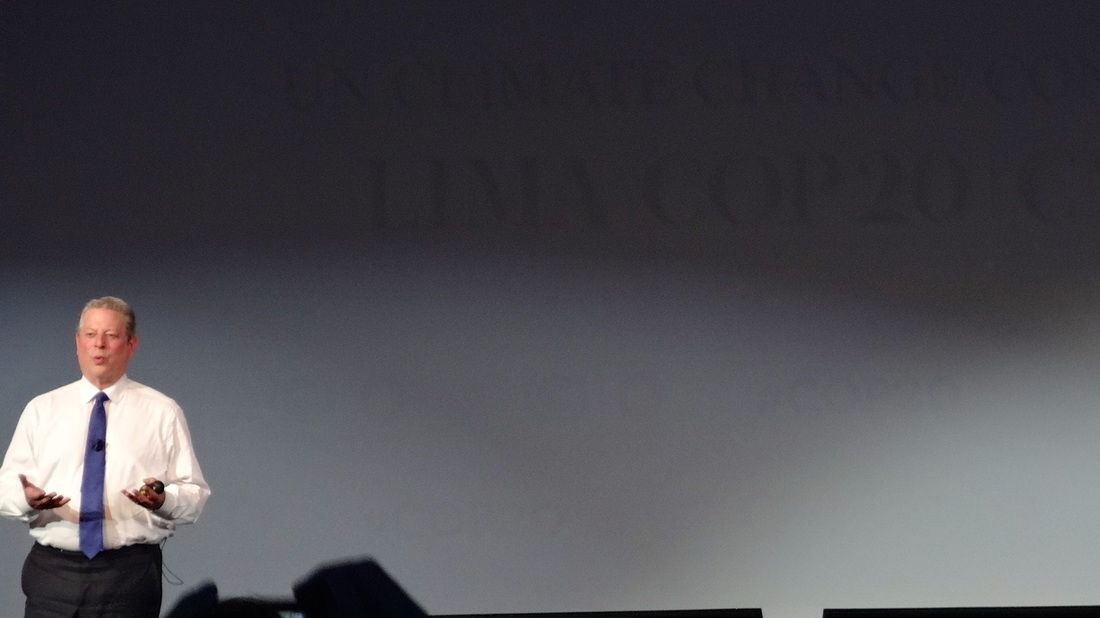
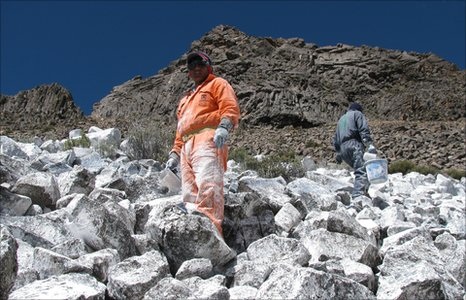

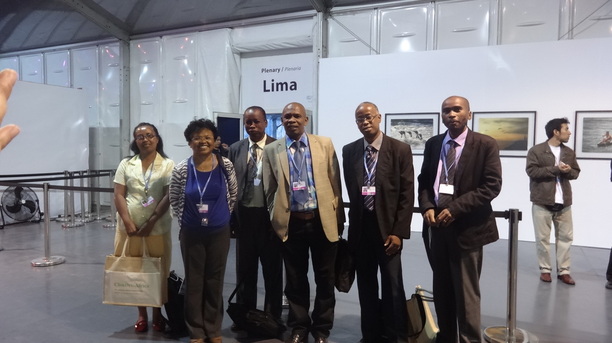
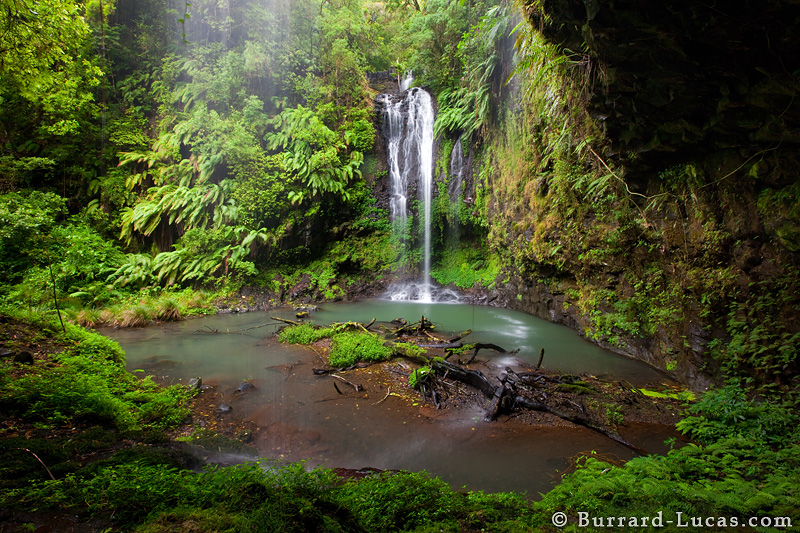
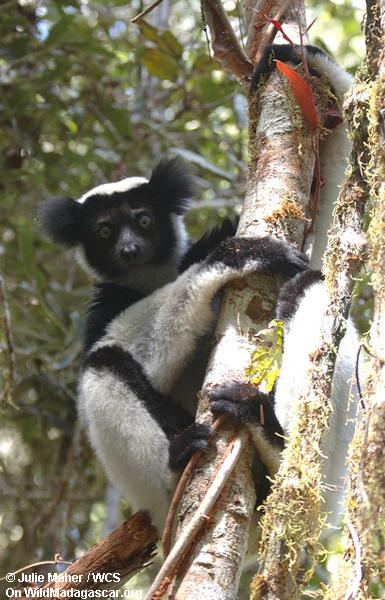
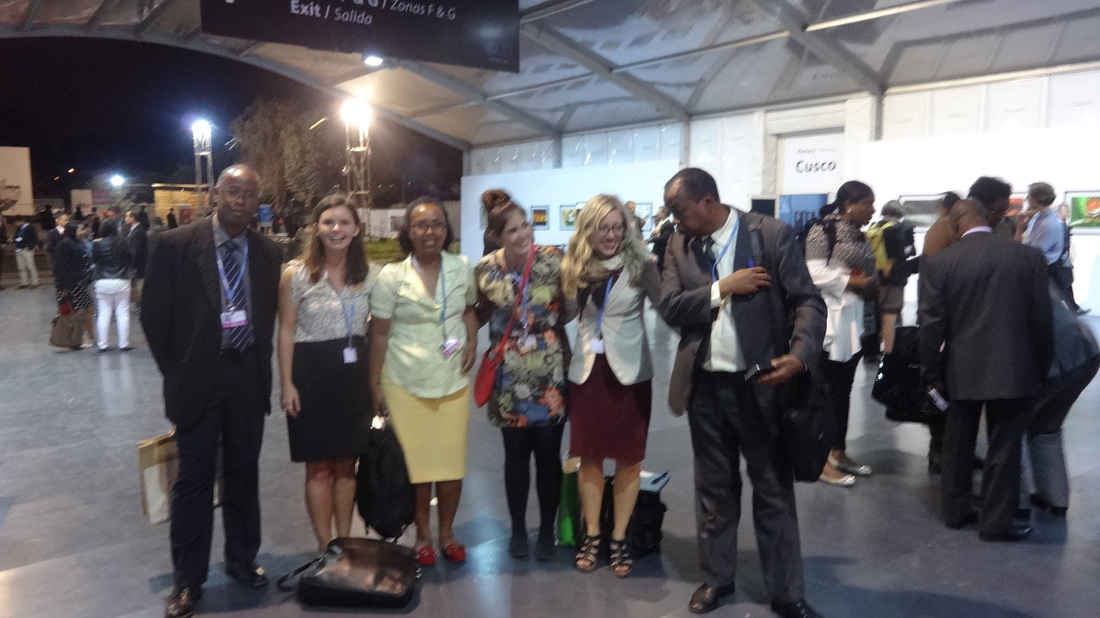
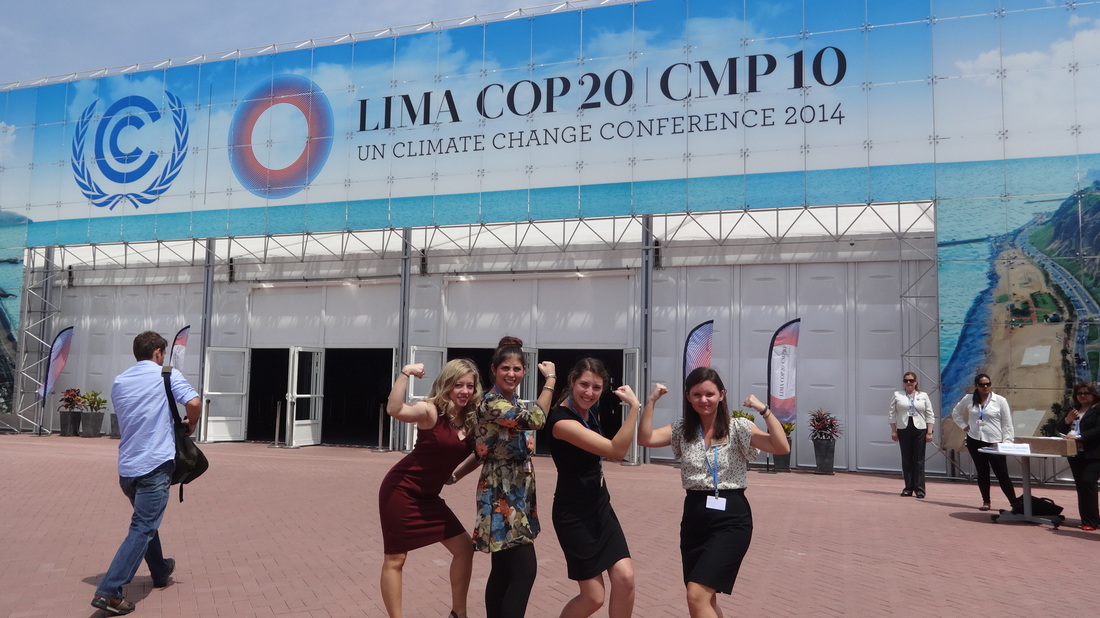
 RSS Feed
RSS Feed
